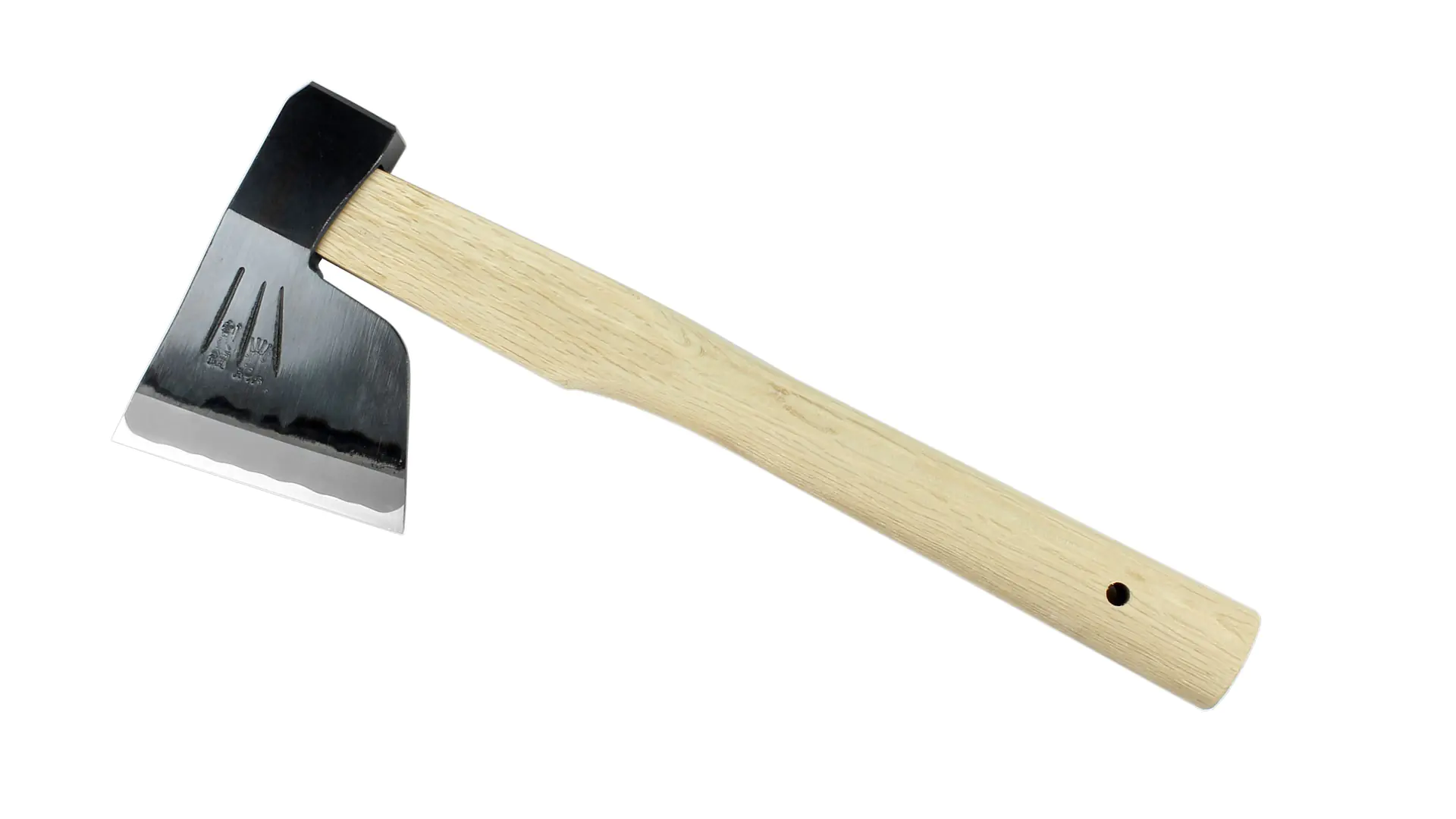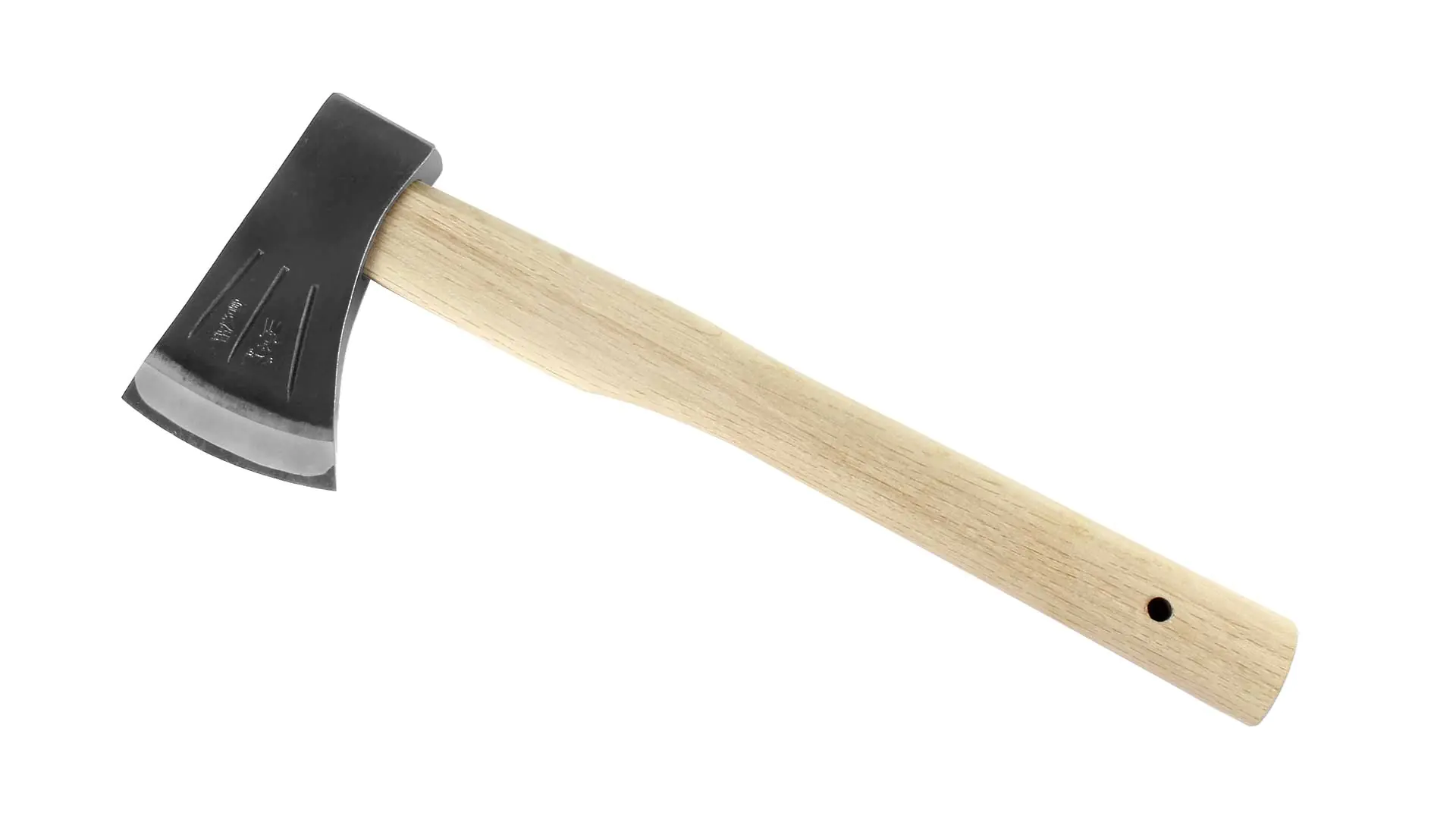April 4, 2025
Interesting facts
Japanese hatchets and axes
The Japanese hatchets and axes from Mizuno Seisakujo in Sanjo, Niigata Prefecture are typically made of 3-layer steel (Warikomi): a hard cutting layer in the middle made of steel with a carbon content of 0.45%, and two softer iron layers on the outside. The forest hatchet and splitting axe are made of single-layer steel. The axe handles are made of Japanese white oak.
For the Japanese hatchets and axes, we use the term employed by the manufacturer in the second line. The designations are very inconsistent in Japan and also vary regionally. Masakari, for example, is often translated as "battle axe," but, as we have been assured, it is definitely not a weapon but simply refers to an axe with a wide blade. The overarching term for "axe or hatchet" is more Ono, sometimes even Chouna. The latter, however, more often refers to a hewing axe.
Defined by its application, a Masakari is a hatchet for chopping the wood that has been roughly split with a larger axe on the chopping block. The swing of the hatchet head with the Masakari allows the handle to be held very close to the head to produce fine kindling. This head shape also makes the Masakari interesting for sculptors.
The manufacturer of the Japanese splitting axe we offer refers to it as Kiwari, while in other areas the term Kiwari Ono is used for it. The blade is quite narrow but very thick to effectively split log sections. The Kiwari Ono is generally somewhat lighter than the Western splitting axe but has a slightly longer handle.
Our small hatchets are closest to the Bakin, a small kitchen hatchet for many purposes.
Considering the very different climatic conditions in Japan and Central Europe, we had to find a solution for the resulting handle fitting problem. In Japan, the air is generally very humid, while in Central Europe it is rather dry. If an axe is fully fitted there and then stored with us for a while, there is a possibility that the handle may loosen and the axe head may fly off during use. Therefore, we originally agreed with the supplier that the axes would only be loosely fitted with protruding wedges. However, this led to some users having trouble loosening the provisional fitting. Therefore, we are gradually changing and delivering unfitted, i.e., disassembled! Which ones are provisionally fitted and which come completely disassembled can be found in the item description. The axe must be fitted by the user - preferably after an adjustment to the local climate of at least one week. The shape of the handle may need to be slightly worked on so that it fits into the eye. For a precise fit, it may also need to be shortened by 1 - 2 cm to completely fill the eye.
Important Note: Do not use these axes as hammers! The eye would deform. Click on the images for enlargements!
For the Japanese hatchets and axes, we use the term employed by the manufacturer in the second line. The designations are very inconsistent in Japan and also vary regionally. Masakari, for example, is often translated as "battle axe," but, as we have been assured, it is definitely not a weapon but simply refers to an axe with a wide blade. The overarching term for "axe or hatchet" is more Ono, sometimes even Chouna. The latter, however, more often refers to a hewing axe.
Defined by its application, a Masakari is a hatchet for chopping the wood that has been roughly split with a larger axe on the chopping block. The swing of the hatchet head with the Masakari allows the handle to be held very close to the head to produce fine kindling. This head shape also makes the Masakari interesting for sculptors.
The manufacturer of the Japanese splitting axe we offer refers to it as Kiwari, while in other areas the term Kiwari Ono is used for it. The blade is quite narrow but very thick to effectively split log sections. The Kiwari Ono is generally somewhat lighter than the Western splitting axe but has a slightly longer handle.
Our small hatchets are closest to the Bakin, a small kitchen hatchet for many purposes.
Considering the very different climatic conditions in Japan and Central Europe, we had to find a solution for the resulting handle fitting problem. In Japan, the air is generally very humid, while in Central Europe it is rather dry. If an axe is fully fitted there and then stored with us for a while, there is a possibility that the handle may loosen and the axe head may fly off during use. Therefore, we originally agreed with the supplier that the axes would only be loosely fitted with protruding wedges. However, this led to some users having trouble loosening the provisional fitting. Therefore, we are gradually changing and delivering unfitted, i.e., disassembled! Which ones are provisionally fitted and which come completely disassembled can be found in the item description. The axe must be fitted by the user - preferably after an adjustment to the local climate of at least one week. The shape of the handle may need to be slightly worked on so that it fits into the eye. For a precise fit, it may also need to be shortened by 1 - 2 cm to completely fill the eye.
Important Note: Do not use these axes as hammers! The eye would deform. Click on the images for enlargements!


